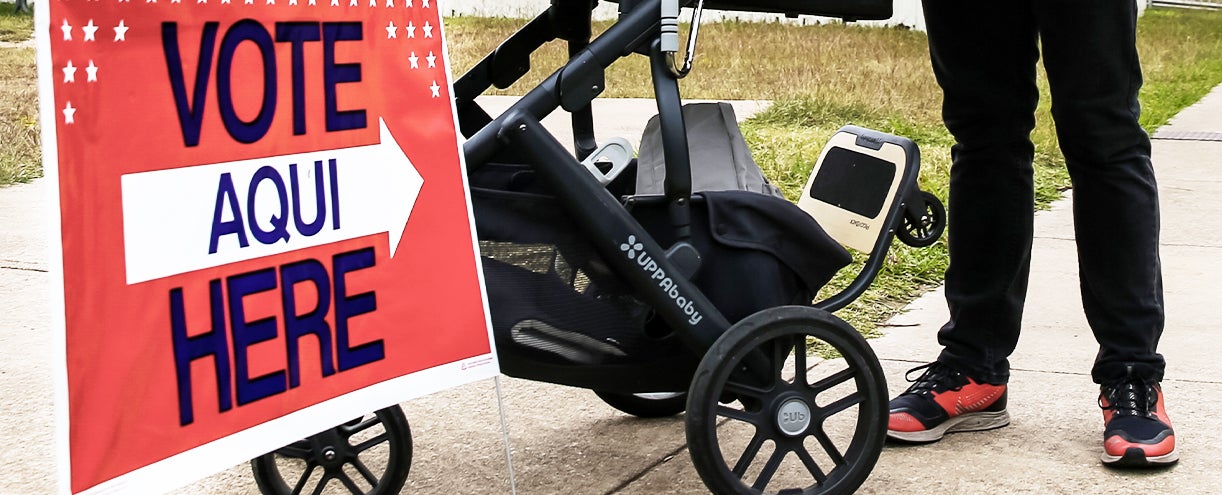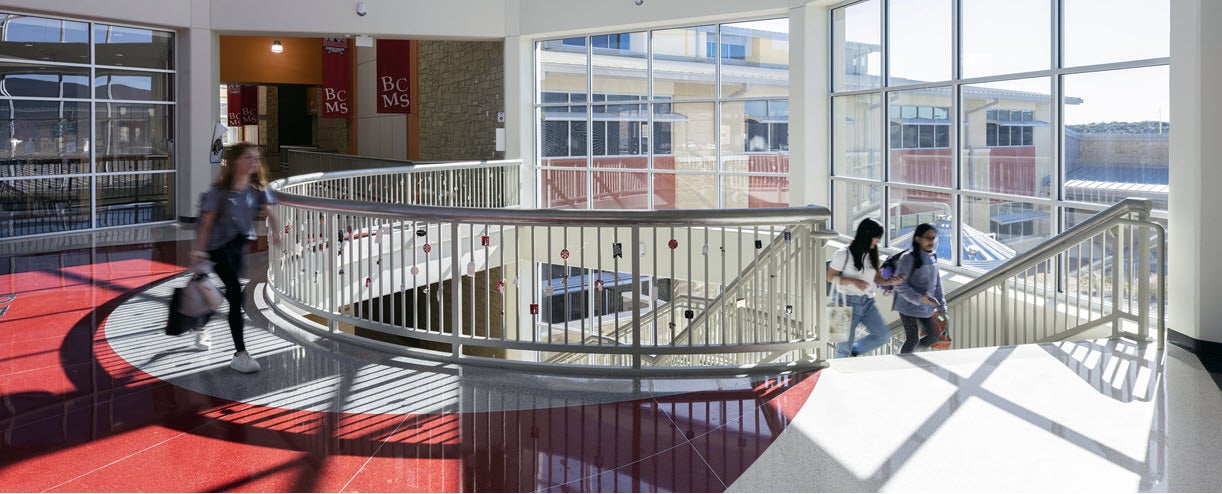School Bond Support Wavers in Texas
When election time rolls around in Texas, voters have historically given a thumbs-up to bonds requested by their local school districts — usually more than half the time. But November 2021 was different.
Of the 110 school bond proposals presented, only 51 passed, or 46%. It was the first time in more than 10 years that more school bonds failed than passed.
Was this just an anomaly? Or an indicator of a trend? School districts should be asking those questions now and finding ways to make sure voters have the details they need about bond proposals long before they step into the booth.
When reviewing the November results, it’s interesting to note that most bonds for other local governments (cities, counties, utility districts) did pass, leaving a question mark about why the outcome for schools was different. After all, in last May’s election, 93 of 113 school bonds passed. And even more perplexing: a good number of the November proposals that failed would not have increased taxes.
Why Was November Different?
It’s no news that the past couple of years have been tense and unpredictable, not only for Texans but for people across the United States. Challenges have included:
- A powerful pandemic that has held its grip for almost two years
- Inflation caused by supply and labor shortages and increasing demand
- Political polarization and ideological divisiveness
All these factors, plus recent changes enacted by the Texas Legislature, have likely caused a buildup of hesitancy and confusion on the part of voters when asked to support school bond proposals.
A Lingering Pandemic
When COVID-19 forced the closure of businesses and schools in March 2020, many parents were suddenly working from home and had the added task of helping their children adapt to virtual learning. This severe disruption to their daily lives caused extreme frustration.
A report by the U.S. Department of Education (Education in a Pandemic) in June 2021 summarized the turmoil: “For the past year many students have had to learn in front of screens at home and in other settings, affected by illness, loss, and economic hardship stemming from the pandemic. Even with heroic efforts by teachers, staff, and school leaders...challenges were profound.”
Concerned about their children’s learning losses, some parents felt the school system let them down. And as students slowly returned to the classroom, some parents disagreed with school leaders about back-to-school decisions. As a result, enrollment in Texas public schools has declined. A Texas Education Agency (TEA) report in June 2021 (Enrollment in Texas Public Schools 2020-21) revealed that during the COVID-19 pandemic, statewide enrollment decreased from the previous year for the first time since TEA began collecting enrollment data in the Public Education Information Management System (PEIMS). Between 2019-20 and 2020-21, student enrollment decreased by 122,354 students (2.2%). These numbers may indicate that criticism has lingered and may have shown up at the polls in November.
Spiraling Inflation
Perhaps an even greater reason for the recent dip in support of school bonds is the inflated economy. The Pew Research Center reported that the annual rate of inflation in the U.S. was 6.2% in October 2021, the highest in more than 30 years.
“It’s really a time where a lot of people’s economic futures are uncertain. Any thought of increasing your tax burden is unappealing right now,” said Dax Gonzalez, TASB Governmental Relations division director.
Jeff Clemmons, TASB Facility Services division director, believes the high cost of living could be the prime reason voters will hold back on bond support. “We’re seeing today the cost to build schools is $300-400 per square foot. And people know they can build a home for about $150 a square foot. They think asking for twice that is a waste. They don’t understand that things like sprinkler systems, ADA compliance, alarm systems, and HVAC equipment must be factored in.
“Schools focus on projects the community will support, but they don’t explain why the cost is so high. That is a huge driver. In the past five years, we’ve seen the cost of school construction go up 50%,” he explained. “It’s difficult to present those numbers to voters when they’re having to hold on to their wallets more tightly.”
Political Polarization
Unfortunately, the political divisiveness that has developed across the country cannot be ignored as a major hurdle.
According to a recent Georgetown University Institute of Politics and Public Service (GU Politics) Battleground Poll, a significant number of voters consider “division in the country” as the most important issue facing them personally. The poll revealed that “32% of voters rank political polarization as one of their top two issues, seven points higher than their next most important issue. The issue of division ranked high across partisan, ideological, gender, racial, and generational lines, even as voters remained polarized over some of the greatest challenges caused by the division.”
In Texas, voters have always tended to be supportive of building their communities and passing school bonds.
“We have seen in a lot of polls that people generally like their neighborhood schools but may not have as favorable an opinion of all public education,” Gonzalez said. Recently, however, some local elections are seeing more influence by political groups that aren’t locally based. “There’s a lot of movement right now with involvement of outside groups in local public school races and issues,” he explained, “and a lot of money being put into the vote-no campaign.” The power of social media has also made it easier for opposing groups to increase their coverage.
Legislative Changes
In the past couple of years, the Texas Legislature has passed requirements for bond elections that have changed the process and caused confusion.
One new requirement is that requests for funds to construct or improve large stadiums, performing arts and recreation facilities, natatoriums, and technology updates must be in a separate ballot proposition and not included as part of a larger bond package for school improvements. Recent elections have shown less support for bonds to build facilities not directly tied to academic institutions.
Another recent legislative change is the requirement that all school bond requests include the statement “THIS IS A PROPERTY TAX INCREASE” in all caps. “Even if it’s not a tax increase, even if it lowers the tax rate, it has to say that,” Gonzalez explained. “There’s a lot of anxiety about a lot of things right now, and I think that anxiety transfers over to something like a bond election where voters see the statement THIS IS A PROPERTY TAX INCREASE. That’s very scary for some people and may cause them to vote no.”
Case in Point: Fort Worth ISD
All of the challenges cited above were felt by districts large and small throughout the state in November — even Fort Worth ISD as it tried to pass what Bloomberg news service reported as the largest issue on the ballot anywhere in the country. The district’s package of bond proposals, totaling $1.49 billion, included a request (Proposition A) for $1.2 billion to remodel/update all middle schools. The balance of the bond package was split into three other propositions (B, C, and D) for construction and upgrades on stadium, fine arts, and athletic facilities. Although the latter three propositions were not approved, Proposition A passed — but by fewer than 100 votes.
Tobi Jackson, president of the Fort Worth ISD Board of Education, credits voters for knowing what the issues were and focusing support on Prop A. “In 2017, we passed a $750 million bond to reconstruct high schools in the district. When the community saw the changes in those schools, which included many new safety features, they said we need to do this for our middle schools, too,” she said. “I think the voters realized this infrastructure is expensive to maintain and these crumbling buildings (most built in the 1950s) are especially tough for us to maintain. Even though we passed by a small margin, we got 80% of the money we asked for.”
But what was the reason for the small margin? “The obstacles that we faced were political headwinds, at the national and state level, and trust due to some confusion,” said Jackson. “The new ballot language was required for the first time, stating that this was a tax increase. And that was only forced upon ISDs.”
Another hurdle was the fact that construction costs and interest rates are going up and the supply chain is disrupted. “The sooner we could get those shovels in the ground, the better off we would be,” she explained. “That was one thing we pointed out to voters: it’s a better value now than it will be a year or two from now.”
As for opposition, Jackson said there will inevitably be a segment of voters who don’t want to support the bonds. “But it’s my belief that the greater good overcomes opposition. In this case, we had so many people who cared and asked others to go out and vote.”
How Can Schools Win Support?
Knowing the challenges, how do school districts prepare for their next bond requests?
“I think they really need to be reaching out to their communities more than they ever have,” said Gonzalez.
“Not just parents but also taxpayers with no kids in school — and business owners. They need to find champions within the community who aren’t school district leaders to come out and say this is a good idea for our community because it would lead to a lot of growth and a lot of improvement for our kids.
“By law, districts cannot advocate one way or the other on a bond,” he continued, “but they can give as much information as possible to their community about the value of improvements and show how sometimes building a new campus is better than fixing an old one over and over again.”
Clemmons agrees that community engagement is critical.
“Community meetings typically won’t draw a large number of people because people just don’t have time to attend. What works is a very active non-school-district support group,” he said. “You need people in the community actively explaining the bond in layman’s terms.”
It’s important when engaging with the community to clear up any misunderstandings. One thing voters may not realize is that schools do not receive state or federal funding for facilities construction or improvement. Bond requests are the only means of support for those projects.
There is also some confusion about the rules that schools have to follow. “In a school bond election, the opposition doesn’t have to play by the same rules that the school district has to, so the opposition can say vote no over and over again. The school district can’t say vote yes at all. They are allowed to communicate factual data only,” Clemmons said. “Schools are hit by this unless they have a very active, privately supported group that gets out there and encourages a yes vote on their own dime.”
One way to clarify misunderstandings about bond requests is to offer visuals of the conditions. It’s difficult for voters to know what the building issues are unless they see them.
“Even school board members are often shocked by photos of the condition of a facility because they aren’t often visitors to every area of a school,” said Clemmons. “Parents, too, often see only the front office or cafeteria of a school and never realize how rundown other parts of the school are. Or they may visit a new school and think all schools in the district must be in the same pristine condition.”
“We live in a very visual world, but we don’t share photos of what we’re trying to repair or expand or replace. Photos are fact. This is what the building looks like.”
Clemmons noted that TASB’s new Facility Services Dashboard, created so districts can access assessment data in one central location, can help in preparing for bond elections. The dashboard features a public link so the community can view certain aspects and schools can choose to make those images visible. “It’s an excellent way for a third-party entity to assess the facility and see what the needs are,” he said.
Extra Work Leads to Rewards
In the wake of Fort Worth ISD’s success, Jackson credits citywide town-hall meetings conducted by Superintendent Dr. Kent Scribner. “The message was given with reliability, validity, and objectivity. Experts were there to answer questions. All questions were answered,” she said.
For districts considering a retry in May, Jackson emphasized how important it is to engage with the community. “Make sure that you acknowledge them. Ask them specifically what they want to see in their schools and ask for their help. Also, talk to students, teachers, and staff. They will tell you what the biggest deficits are on campus,” she recommended. “And be sure to get all the elected officials and foundations on board. If they aren’t on board, you’re going to have a tough run.”
Knowing that environment affects how students learn, Jackson is proud the Fort Worth ISD board has passed $2 billion worth of bonds in four years. “While it’s a lot of work, the reward is that for decades forward you’ll be able to see the bounty and the benefits of that work on behalf of kids,” she said.





